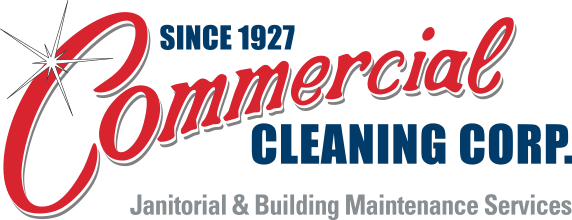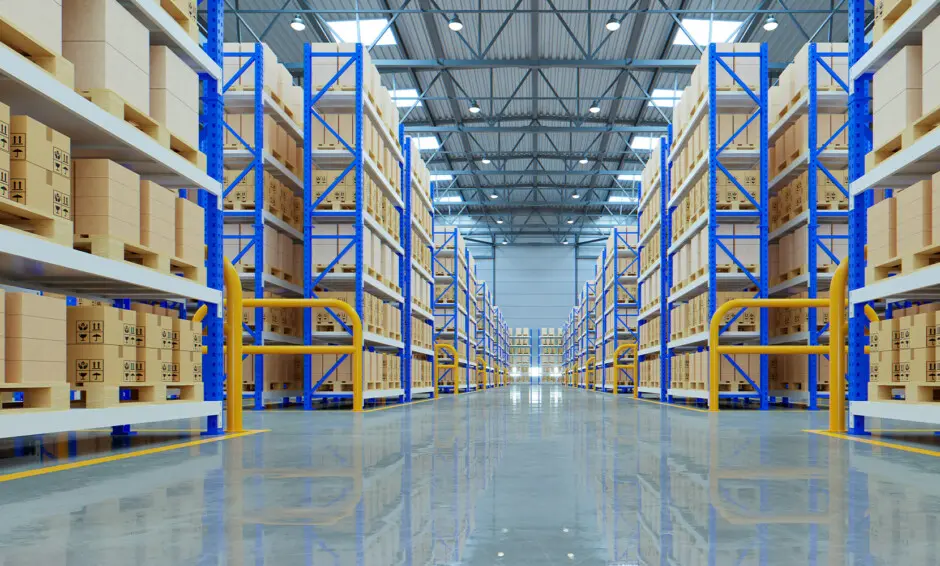Warehouses are the heart of industrial operations, keeping goods moving, supply chains flowing, and productivity high. But they also come with unique risks. With heavy machinery, tight spaces, high shelving, and fast-paced workflows, one misstep can lead to serious consequences.
That’s why warehouse cleaning needs to be a proactive safety and liability reduction strategy. A clean warehouse reduces risks like slips and falls, chemical exposure, airborne contaminants, and equipment malfunctions. It also supports compliance with OSHA regulations and helps warehouse managers stay ahead of growing safety expectations.
The Link Between Cleanliness & Workplace Safety
In a warehouse setting, small cleaning oversights can lead to big problems. Cluttered walkways, dust buildup, and unclean machinery all contribute to accidents and injuries, and they’re more common than many facility managers realize. OSHA reports that violations related to fall protection remain the most frequently cited workplace safety issue in the country, topping its list of citations for fiscal year 2024.¹
Routine warehouse cleaning helps prevent these issues before they escalate. Facilities can create a safer environment that supports operational flow and regulatory compliance by keeping surfaces clear, minimizing dust, and promptly addressing spills or equipment blockages.
This level of diligence is no longer optional. In July 2023, the U.S. Department of Labor launched a national emphasis program to improve safety in warehouses and distribution centers. The initiative responds to consistently high injury rates across the sector and directs OSHA to conduct targeted inspections focused on material handling, industrial vehicle use, and walking-working surfaces.² With federal oversight increasing, proactive cleaning is now a smart liability strategy.
Risk Mitigation Through Routine Warehouse Cleaning & Sanitation
When it comes to warehouse safety, reactive cleaning isn’t enough. To effectively reduce liability and protect workers, facility managers must take a preventive approach to address potential hazards before they escalate into incidents. Routine warehouse cleaning services are essential to this strategy, targeting key risk areas often responsible for workplace injuries, health concerns, and operational downtime.
Preventing Slips, Trips & Falls
Slip-and-fall accidents are one of the most common warehouse safety issues. Between spills, uneven flooring, and blocked walkways, it only takes a momentary oversight to cause a serious injury. Proactive cleaning minimizes these risks by:
- Sweeping up loose debris and removing obstructions such as broken pallets or packaging
- Mopping up liquid spills immediately to prevent slick surfaces
- Installing non-slip floor coatings and strategically placed industrial mats
- Using visible wet floor signage during and after cleaning
- Performing routine floor inspections to identify uneven surfaces or problem areas
Reducing Chemical Exposure & Hazardous Material Risks
Warehouses often store or use chemicals and lubricants that pose safety risks if not managed correctly. These substances can cause contamination, health issues, or even fires without proper industrial cleaning. Risk mitigation starts with:
- Safely storing and labeling all hazardous materials in accordance with OSHA’s Hazard Communication Standard (HCS)
- Scheduling regular deep cleaning to eliminate residue buildup on surfaces, floors, and shelving
- Partnering with professionals trained in emergency spill response and chemical-safe cleaning protocols
Controlling Airborne Contaminants & Dust Accumulation
Dust and airborne particles can reduce air quality, cause respiratory issues, and become fire hazards when left unchecked. Clean air begins with:
- Regularly cleaning high surfaces like racking, ductwork, light fixtures, and ventilation grilles
- Maintaining HVAC systems and replacing filters on schedule to support proper air circulation
- Using industrial vacuums and filtration systems in high-dust environments to capture particles at the source
Preventing Equipment Malfunctions & Fire Hazards
Machinery like forklifts, conveyor belts, and automated systems must remain clean and free of obstructions to operate safely. Debris buildup can lead to overheating, short circuits, or mechanical failure. Key steps include:
- Scheduling targeted cleaning around high-use areas such as loading docks, electrical panels, and machinery zones
- Removing flammable materials from around heat sources and mechanical equipment
- Conducting deep cleans to remove dust and grime that can compromise performance or create fire hazards
Proactive Cleaning Strategies for Long-Term Safety
While one-time cleanings or reactive fixes might solve short-term problems, implementing a long-term cleaning strategy is the most effective way to reduce liability and ensure workplace safety. Proactive warehouse cleaning is about building a consistent, preventive approach that aligns with operational demands, supports OSHA compliance, and safeguards employee well-being over time. A structured plan is the foundation of a safer, more efficient warehouse.
Essential Cleaning Measures
A successful warehouse cleaning strategy starts with a clearly defined cleaning schedule that outlines daily, weekly, and monthly responsibilities. Daily tasks may include floor cleaning, trash removal, and sanitizing high-touch surfaces, while weekly duties might involve deeper scrubbing of break areas, restrooms, and common zones. Monthly cleaning efforts often focus on high shelves, HVAC systems, and machine zones, where dust and debris can accumulate unnoticed.
But a cleaning schedule alone isn’t enough. You must train employees to identify and report hazards, such as spilled liquids, blocked exits, or dust buildup in high areas. By empowering staff to act as the first line of defense, facilities can prevent minor issues from turning into major safety concerns.
Using eco-friendly, OSHA-compliant products is also essential. These products support sustainability goals and ensure the safety of your workforce by minimizing exposure to harsh chemicals and irritants. Selecting solutions designed for industrial environments helps meet regulatory standards while maintaining a healthy atmosphere for employees.
Consistent implementation of these cleaning measures does more than keep the facility looking professional. It fosters a safety culture, ensures regulatory compliance, and helps operations run smoothly without interruption.
The Role of Professional Warehouse Cleaning Services
Partnering with professionals makes all the difference, especially in complex industrial environments. A cleaning company specializing in industrial facility cleaning brings more than just cleaning supplies. They bring industry-specific expertise, commercial-grade equipment, and proven systems that align with your operational goals.
Professionals understand what industrial cleaning services entail, from compliance with OSHA standards to the nuances of warehouse zoning, chemical handling, and equipment maintenance. Their trained teams can develop cleaning plans tailored to your facility’s unique layout and activity levels, addressing high-traffic zones, high-risk areas, and production-sensitive spaces with the appropriate frequency and attention to detail.
Outsourcing cleaning services also helps internal teams focus on core operations without the added pressure of maintenance oversight. With professionals managing sanitation schedules, inspections, and deep cleaning, warehouse managers gain peace of mind knowing their facility remains safe, compliant, and ready for inspection at any time.
As industry regulations tighten and warehouse safety becomes a national focus, professional cleaning services provide a stronger line of defense, ensuring cleanliness isn’t just a box to check but a powerful tool for risk reduction and operational excellence.
The Final Sweep: Keeping Warehouses Safe & Compliant
Warehouses thrive on efficiency, precision, and safety. And that starts with a clean foundation. Whether you’re focused on reducing liability, improving OSHA compliance, or creating a safer environment for your team, warehouse cleaning is an essential part of your strategy.
Don’t wait for an accident or inspection to make safety a priority. Contact Commercial Cleaning Corporation today to schedule your warehouse cleaning consultation and protect your people, productivity, and peace of mind.
Sources:
1. Commonly Used Statistics, Occupational Safety and Health Administration
2. Labor Department Launches Program to Reduce Warehouse Injuries, Supply Chain Dive


2 thoughts on “Warehouse Cleaning Strategies to Reduce Liability & Improve Safety”
Comments are closed.